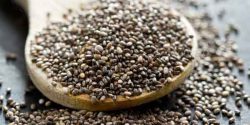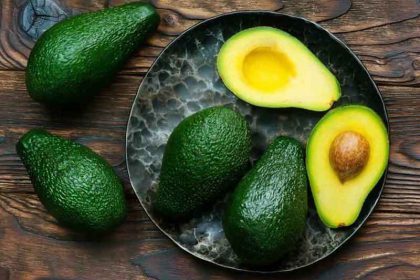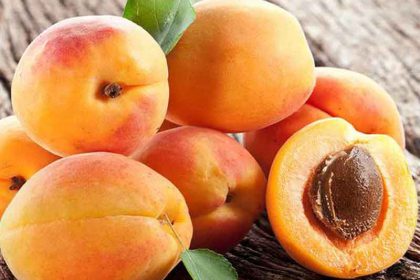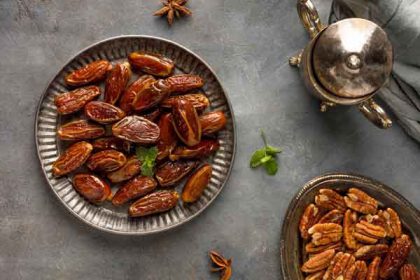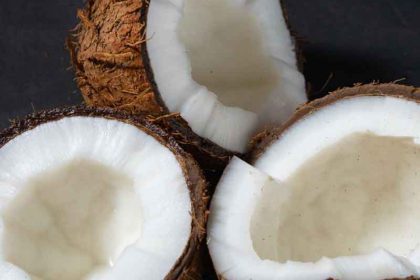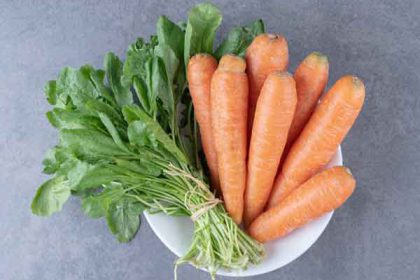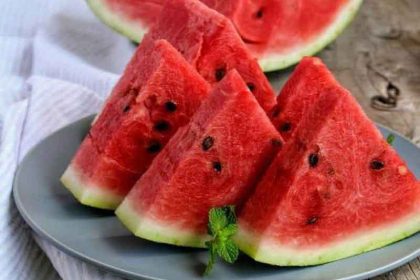Benefits of lobster for heart and liver and diabetics and weight loss
Lobster benefits
Benefits of lobster for heart and liver and diabetics and weight loss on Nichooli site. We hope this article will be of interest to you.
Lobster is a delicious seafood that offers various potential health benefits when consumed in moderation. It is rich in high-quality protein, low in saturated fat, and contains essential nutrients like vitamin B12, iodine, selenium, zinc, and copper. Lobster also provides omega-3 fatty acids, which can support heart and brain health. However, there are considerations to keep in mind when eating lobster. It is relatively high in dietary cholesterol, and excessive consumption may contribute to high cholesterol levels. People with shellfish allergies should avoid lobster due to the risk of severe allergic reactions. Sustainability concerns in lobster harvesting should also be addressed. Imitation lobster meat, made from various seafood ingredients, may be a processed food product with varying nutritional content. It can be suitable for specific dietary preferences but should be consumed in moderation. Excessive lobster consumption can lead to high cholesterol, sodium intake, digestive discomfort, allergies, and potential exposure to environmental contaminants. Proper preparation and portion control are essential for enjoying lobster safely. Lobster can be part of a balanced diet, providing protein and essential nutrients, but should be enjoyed in moderation, with attention to individual dietary needs and preferences.
Lobster benefits
Lobster is a delicious seafood known for its rich flavor and tender meat. While it is primarily enjoyed for its taste, lobster also offers some potential health benefits when consumed in moderation. Here are some of the benefits associated with lobster consumption:
High-Quality Protein: Lobster is an excellent source of high-quality protein, which is essential for muscle growth, repair, and overall body function. It provides all the essential amino acids needed by the body.
Low in Fat: Lobster is relatively low in saturated fat, making it a heart-healthy protein option. It is a lean source of meat, which can be beneficial for those watching their fat intake.
Rich in Omega-3 Fatty Acids: Lobster contains omega-3 fatty acids, particularly EPA (eicosapentaenoic acid) and DHA (docosahexaenoic acid). Omega-3s are known for their cardiovascular benefits and their role in reducing inflammation in the body.
Vitamins and Minerals: Lobster provides various vitamins and minerals, including vitamin B12, vitamin E, zinc, and selenium. Vitamin B12 is essential for nerve health and the formation of red blood cells, while zinc and selenium are important for immune function and overall health.
Low in Calories: Lobster is relatively low in calories, especially when compared to other protein sources like beef or pork. This can be advantageous for individuals looking to manage their calorie intake.
Source of Phosphorus: Lobster is a good source of phosphorus, which is crucial for bone health and the formation of DNA. It also plays a role in energy metabolism.
Aids in Weight Management: Due to its low calorie and fat content, lobster can be part of a weight management diet. It provides satiety and protein without contributing to excess calorie intake.
Disadvantages of eating Lobster
While lobster offers several potential health benefits when consumed in moderation, there are also some disadvantages and considerations associated with eating lobster:
High Cholesterol Content: Lobster contains a relatively high amount of dietary cholesterol. Excessive dietary cholesterol intake can contribute to high cholesterol levels in some individuals, potentially increasing the risk of cardiovascular issues. It’s important for people with high cholesterol or a history of heart disease to consume lobster in moderation.
Sensitivity and Allergies: Shellfish allergies, including lobster allergies, can be severe and even life-threatening for some individuals. Allergic reactions may include hives, difficulty breathing, swelling, and digestive symptoms. People with known shellfish allergies should avoid lobster and related shellfish altogether.
Environmental Concerns: The harvesting of lobster can have environmental impacts, including overfishing and habitat destruction. Sustainable fishing practices are essential to mitigate these issues. Consumers can choose certified sustainable lobster products to support responsible fishing.
Cost: Lobster is often considered a luxury food item and can be relatively expensive compared to other sources of protein. Its cost may limit regular consumption for some individuals.
Preparation Methods: Lobster dishes are often prepared with added ingredients like butter, cream, and salt, which can increase calorie and fat content. Preparations such as lobster bisque and lobster rolls may be high in calories and sodium.
Health Risks from Contaminants: Like other seafood, lobster may contain contaminants such as mercury and polychlorinated biphenyls (PCBs) from water pollution. These contaminants can pose health risks if consumed in large quantities over time. However, lobster generally contains lower levels of these contaminants compared to certain fish species.
Environmental Impact of Shell Disposal: The disposal of lobster shells can contribute to waste management challenges in coastal areas. Finding environmentally friendly ways to manage lobster shell waste is an ongoing concern.
Sustainability Concerns: Some lobster populations are at risk due to overfishing and habitat degradation. Sustainable lobster harvesting practices are crucial to protect lobster populations and marine ecosystems.
Is Lobster healthy?
Lobster can be part of a healthy diet when consumed in moderation and as part of a balanced meal plan. It offers several nutritional benefits, but it’s essential to be aware of its nutritional profile and consider individual dietary needs and preferences. Here are some reasons why lobster can be considered a healthy choice:
Low in Calories: Lobster is relatively low in calories compared to some other protein sources, making it suitable for calorie-conscious individuals.
Protein-Rich: Lobster is an excellent source of high-quality protein, which is essential for muscle repair, growth, and overall body function.
Low in Saturated Fat: It contains very little saturated fat, which is a type of fat associated with an increased risk of heart disease when consumed in excess.
Rich in Vitamins and Minerals: Lobster provides essential vitamins and minerals, including vitamin B12, vitamin B6, niacin, phosphorus, zinc, and selenium.
Omega-3 Fatty Acids: While not as high as fatty fish like salmon, lobster does contain omega-3 fatty acids, which are beneficial for heart health and reducing inflammation.
However, it’s essential to be aware of some considerations when including lobster in your diet:
Cholesterol Content: Lobster is relatively high in dietary cholesterol. While dietary cholesterol intake does not have as significant an impact on blood cholesterol levels as once thought, individuals with high cholesterol or a history of heart disease should consume lobster in moderation.
Allergies: Shellfish allergies, including lobster allergies, are relatively common and can be severe. Individuals with known shellfish allergies should avoid lobster.
Preparation Methods: Lobster dishes are often prepared with added ingredients like butter, cream, and salt, which can increase calorie and fat content. Choosing healthier preparation methods, such as grilling or steaming, can make lobster dishes more health-conscious.
Environmental Considerations: Sustainable lobster sourcing is essential to protect lobster populations and marine ecosystems. Look for certified sustainable lobster products to support responsible fishing practices.
Is imitation Lobster meat healthy?
mitation lobster meat, often made from various seafood ingredients like fish (typically pollock) and flavorings, is generally considered to be a processed food product. Whether it is healthy or not depends on various factors, including your dietary preferences, nutritional needs, and overall diet.
Here are some considerations:
Nutritional Content: Imitation lobster meat may have a different nutritional profile compared to real lobster. It often contains lower levels of protein, omega-3 fatty acids, and other nutrients found in real seafood.
Processed Ingredients: The production of imitation lobster meat typically involves processing, which can include additives, preservatives, and flavorings. Some people prefer to avoid heavily processed foods due to concerns about additives or high sodium content.
Allergens: Imitation lobster meat may contain common seafood allergens, such as fish and shellfish proteins. If you have allergies to seafood, you should be cautious when consuming imitation seafood products.
Sodium Content: Many processed seafood products, including imitation lobster, can be high in sodium. Excessive sodium intake can contribute to health problems like high blood pressure.
Sustainability: Real lobster fishing can have environmental concerns, so some people choose imitation lobster as a more sustainable option. However, the sustainability of imitation seafood products depends on the sources of the ingredients used.
Dietary Preferences: For people following specific dietary plans, such as vegetarian or vegan diets, imitation seafood can be a suitable substitute for the real thing.
Overall Diet: The healthiness of imitation lobster meat also depends on your overall diet. If you consume it as part of a balanced diet that includes a variety of nutrient-rich foods, it may be an acceptable occasional choice.
Side effects of eating too much Lobster
While lobster can be a delicious and nutritious part of a balanced diet when consumed in moderation, overindulging or eating too much lobster may lead to several potential side effects and health concerns. Here are some potential issues associated with excessive lobster consumption:
High Cholesterol: Lobster is relatively high in cholesterol. Consuming large quantities of lobster may contribute to elevated blood cholesterol levels, which can increase the risk of heart disease, especially if you already have high cholesterol or other risk factors.
High Sodium: Lobster, when prepared with added salt or sauces, can be high in sodium. Excessive sodium intake can lead to high blood pressure, fluid retention, and an increased risk of cardiovascular problems.
Digestive Discomfort: Eating too much lobster or other shellfish can sometimes cause digestive discomfort, such as bloating, gas, or diarrhea, particularly if you are not accustomed to eating seafood.
Allergic Reactions: Some people are allergic to shellfish, including lobster. Allergic reactions to lobster can range from mild skin irritation to severe anaphylaxis, a life-threatening condition. If you have a known shellfish allergy, avoid lobster altogether.
Mercury Exposure: Like many seafood, lobster can contain trace amounts of mercury. Consuming excessive amounts of high-mercury seafood over an extended period may lead to mercury toxicity, which can have adverse effects on the nervous system.
Purine Content: Lobster has a moderate purine content. Purines are substances that break down into uric acid, and high uric acid levels can lead to gout, a painful joint condition.
Weight Gain: Lobster is relatively low in calories and fat, but if it’s consumed excessively along with rich butter or creamy sauces, it can contribute to weight gain, especially when part of a high-calorie meal.
Environmental Concerns: Lobster is a resource-intensive food, and overfishing and unsustainable harvesting practices can harm marine ecosystems. Choosing sustainably sourced lobster can help mitigate these concerns.
Is Lobster good for weight loss?
Lobster can be a part of a weight loss-friendly diet when consumed in moderation and prepared in a healthy manner. Here are some reasons why lobster can be a reasonable choice for individuals looking to manage their weight:
Low in Calories: Lobster is relatively low in calories compared to many other protein sources. A 3.5-ounce (100-gram) serving of cooked lobster typically contains around 90-100 calories, making it a relatively low-calorie option for protein.
High in Protein: Lobster is a good source of high-quality protein, which can help you feel full and satisfied, potentially reducing the overall calorie intake.
Low in Fat: Lobster is naturally low in fat, particularly saturated fat. It’s a lean source of protein, which can be beneficial for those aiming to control their calorie and fat intake.
Rich in Nutrients: Lobster provides essential nutrients like vitamin B12, iodine, selenium, and zinc, which are important for overall health and metabolism.
Omega-3 Fatty Acids: Lobster contains some omega-3 fatty acids, which are known for their potential health benefits, including reducing inflammation and supporting heart health.
Benefits of eating Lobster legs
Eating lobster legs, like consuming other parts of the lobster, can provide various potential benefits due to its nutritional content. Here are some potential benefits of eating lobster legs:
High-Quality Protein: Lobster legs are a good source of high-quality protein. Protein is essential for muscle repair and growth, and it can help you feel full and satisfied, making it a valuable component of a balanced diet.
Low in Calories: Lobster legs are relatively low in calories compared to many other protein sources, such as fatty cuts of meat or processed proteins. This makes them a suitable choice for individuals looking to manage their calorie intake.
Rich in Essential Nutrients: Lobster legs provide essential nutrients like vitamin B12, iodine, selenium, zinc, and copper. These nutrients play various roles in maintaining overall health, including supporting the immune system, promoting healthy thyroid function, and aiding in the formation of red blood cells.
Omega-3 Fatty Acids: Lobster legs contain some omega-3 fatty acids, particularly EPA (eicosapentaenoic acid) and DHA (docosahexaenoic acid). Omega-3 fatty acids are known for their potential benefits in reducing inflammation, supporting heart health, and promoting brain function.
Low in Saturated Fat: Lobster legs are naturally low in saturated fat, which is associated with an increased risk of heart disease when consumed in excess. Choosing lean protein sources like lobster can help you manage your saturated fat intake.
Low in Carbohydrates: Lobster legs are virtually carbohydrate-free, which can be advantageous for those following low-carb or ketogenic diets.
Delicious and Versatile: Many people enjoy the taste and texture of lobster legs, which can make them a satisfying addition to meals. Lobster legs can be used in various recipes, from lobster bisque to salads and pasta dishes.
Is Lobster bad for you?
Lobster, like many foods, is not inherently “bad” for you, but its impact on your health can vary depending on various factors, including how it’s prepared, your overall diet, and any specific dietary or health considerations you may have. Here are some key points to consider:
Nutritional Benefits: Lobster is a source of several essential nutrients, including high-quality protein, vitamin B12, iodine, selenium, zinc, and copper. It’s also a source of omega-3 fatty acids, particularly EPA and DHA, which have potential health benefits.
Low in Saturated Fat: Lobster is naturally low in saturated fat, making it a lean source of protein compared to many other animal-based protein sources.
Low in Carbohydrates: Lobster is virtually carbohydrate-free, which can be advantageous for those following low-carbohydrate or ketogenic diets.
Calories and Portion Control: Lobster is relatively low in calories, but portion control is important. Consuming large quantities of lobster, especially if it’s prepared with excessive butter or creamy sauces, can contribute to calorie intake and weight gain.
Preparation Matters: How lobster is prepared can significantly impact its overall nutritional profile. Steaming, grilling, or boiling lobster with minimal added fats and sauces is a healthier choice than dishes that are high in saturated fats and calories.
Allergies: Some individuals have shellfish allergies, including lobster allergies. Allergic reactions can range from mild to severe and may include symptoms like hives, difficulty breathing, and anaphylaxis. For those with allergies, lobster can be harmful or even life-threatening.
Sustainability: Concerns about the environmental impact of lobster harvesting should also be considered. Sustainable sourcing and responsible seafood choices can help mitigate these concerns.
Personal Dietary Goals: Whether lobster is “bad” for you depends on your dietary goals and preferences. For example, it may not align with a vegetarian or vegan diet, but it can be a part of a balanced diet for those who include animal products.
1 Cup Lobster calories
The calorie content of lobster can vary depending on the cooking method and the specific size of the lobster. Here is a general overview of the approximate calorie content for different types of cooked lobster:
Boiled or steamed lobster (3 ounces or 85 grams): Approximately 90-100 calories.
Lobster tail (raw, without butter or oil, 3 ounces or 85 grams): Approximately 80-90 calories.
Lobster meat (cooked, without butter or oil, 3 ounces or 85 grams): Approximately 90-100 calories.
Lobster fat calories
Lobster is relatively low in fat compared to other animal proteins. The exact fat content can vary depending on the specific type of lobster and cooking method, but here is a general overview of the fat and calorie content of cooked lobster:
Boiled or steamed lobster (3 ounces or 85 grams): Approximately 1-2 grams of fat and 90-100 calories.
Lobster tail (cooked, without butter or oil, 3 ounces or 85 grams): Approximately 1-2 grams of fat and 90-100 calories.
Lobster meat (cooked, without butter or oil, 3 ounces or 85 grams): Approximately 1-2 grams of fat and 90-100 calories.
It’s important to note that these values are estimates and can vary based on factors such as the size and preparation of the lobster. Adding butter or oil to lobster or consuming lobster in prepared dishes can significantly increase the fat and calorie content.
When considering the fat and calorie content of lobster, it’s also important to consider the overall nutritional profile and the benefits it offers, such as protein, omega-3 fatty acids, vitamins, and minerals. Lobster can be a healthy addition to a balanced diet when consumed in moderation and prepared in a health-conscious manner.
Lobster nutrition facts 100g
The following are approximate nutrition facts for 100 grams (about 3.5 ounces) of cooked, boiled lobster meat, without any added sauces or seasonings:
Calories: 90-100 calories
Protein: 19-20 grams
Total Fat: 0.6-1 gram
Saturated Fat: Less than 0.1 gram
Monounsaturated Fat: 0.1 gram
Polyunsaturated Fat: 0.2-0.3 grams
Cholesterol: 72-97 milligrams
Sodium: 325-500 milligrams
Potassium: 256 milligrams
Vitamin B12: 4.85 micrograms (approximately 202% of the recommended daily intake)
Iodine: 100 micrograms (approximately 67% of the recommended daily intake)
Selenium: 31.5 micrograms (approximately 57% of the recommended daily intake)
Zinc: 2.5 milligrams (approximately 23% of the recommended daily intake)
Copper: 0.03 milligrams (approximately 3% of the recommended daily intake)
Please note that these values can vary slightly depending on factors like the cooking method and the specific type of lobster being consumed. Additionally, these values are based on the meat alone and do not account for any added ingredients or sauces that may accompany the lobster, which can significantly affect the overall nutritional content of a lobster dish.
Whole Lobster nutrition facts
The nutritional composition of a whole lobster can vary based on its size and preparation method. Here is a general overview of the nutritional information for a whole, cooked lobster (approximately 1 pound or 453 grams) without any added ingredients:
Calories: Approximately 450-550 calories
Protein: Approximately 70-80 grams
Fat: Approximately 10-15 grams
Carbohydrates: Minimal, usually less than 1 gram
Cholesterol: Approximately 200-250 milligrams
Sodium: Varies depending on the cooking method and added seasonings, typically around 800-1000 milligrams
Potassium: Approximately 600-700 milligrams
Calcium: Approximately 80-100 milligrams
Iron: Approximately 2-3 milligrams
Vitamin A: Minimal, usually less than 50 international units
Vitamin C: Minimal, usually less than 1 milligram
Lobster cholesterol per 100g
The cholesterol content in lobster can vary slightly depending on factors such as the type of lobster and its preparation method, but it generally contains around 72-97 milligrams of cholesterol per 100 grams of cooked, boiled lobster meat. Cholesterol values within this range are typical for lobster. It’s important to note that while lobster is relatively high in cholesterol compared to some other seafood, it can still be part of a balanced diet for most individuals when consumed in moderation. If you have specific dietary restrictions or concerns about cholesterol, it’s advisable to consult with a healthcare professional or registered dietitian for personalized guidance.
Lobster protein per 100g
Lobster is a good source of protein, providing approximately 19-20 grams of protein per 100 grams (about 3.5 ounces) of cooked, boiled lobster meat. This makes lobster a relatively high-protein seafood option, which can be beneficial for those looking to increase their protein intake as part of a balanced diet. Protein is essential for various bodily functions, including muscle maintenance, repair, and overall health.
Is Lobster high in protein?
Lobster is considered a good source of protein, and it can be part of a high-protein diet. On average, lobster contains approximately 19-20 grams of protein per 100 grams (about 3.5 ounces) of cooked, boiled lobster meat. This protein content is relatively high compared to some other seafood and makes lobster a valuable protein source in a balanced diet. Protein is an essential nutrient that plays a crucial role in various bodily functions, including muscle maintenance, immune support, and overall health. Incorporating lobster into your diet, along with other protein-rich foods, can contribute to meeting your daily protein needs. However, it’s important to consider portion sizes and overall dietary balance when incorporating lobster or any protein source into your meals.
Calories in Lobster curry
The calorie content in lobster curry can vary depending on the specific recipe and ingredients used. However, I can provide you with a rough estimate. On average, a serving of lobster curry (approximately 1 cup or 240 grams) may contain around 200-300 calories. This estimate includes the calories from the lobster, curry sauce, and any additional ingredients commonly used in lobster curry recipes such as vegetables, coconut milk, and spices. Please note that this is a general estimation, and the actual calorie content may vary based on the specific recipe and portion size.
Lump lobster meat calories
The calorie content in lump lobster meat can vary slightly depending on the specific brand and packaging. On average, a 100-gram serving of cooked lump lobster meat contains approximately 90-100 calories. This calorie estimate is based on the meat being boiled or steamed without any additional ingredients or seasonings. However, it’s important to check the nutritional information on the packaging or consult specific brands for accurate calorie information as it may vary slightly.
Lobster benefits for female
Lobster can offer several potential health benefits for individuals of all genders, including females. These benefits are primarily attributed to its nutritional content and can contribute to overall well-being. Here are some potential benefits of including lobster in a balanced diet for females:
Protein: Lobster is a good source of high-quality protein. Protein is essential for various bodily functions, including muscle repair, immune support, and hormone production.
Omega-3 Fatty Acids: Lobster contains some omega-3 fatty acids, which are known for their potential health benefits. These fatty acids may help reduce inflammation, support heart health, and contribute to overall cognitive function.
Nutrient-Rich: Lobster provides essential nutrients such as vitamin B12, iodine, selenium, zinc, and copper, which are important for maintaining overall health, including proper thyroid function, immune support, and the formation of red blood cells.
Low in Saturated Fat: Lobster is naturally low in saturated fat, making it a lean source of protein. A diet low in saturated fat can be beneficial for heart health.
Low in Calories: Lobster is relatively low in calories compared to many other protein sources, making it suitable for individuals looking to manage their calorie intake.
Iron: Lobster contains a small amount of iron, which is important for preventing iron-deficiency anemia, particularly in women of childbearing age.
Collagen Support: The vitamin C content in lobster can aid in the body’s production of collagen, which is essential for maintaining skin health and elasticity.
Lobster poisoning symptoms
Lobster poisoning is a rare condition, but it can occur if lobster or other shellfish are not properly handled, stored, or cooked. Lobster poisoning is typically associated with the ingestion of toxins produced by harmful algae or bacteria. The specific symptoms of lobster poisoning can vary depending on the type of toxin involved and the amount consumed, but they may include:
Gastrointestinal Symptoms:
Nausea
Vomiting
Diarrhea
Abdominal pain and cramps
Neurological Symptoms:
Confusion
Memory problems
Dizziness
Headaches
Weakness
Respiratory Symptoms:
Difficulty breathing
Shortness of breath
Numbness or Tingling:
Numbness or tingling in the extremities
Paralysis:
In severe cases, lobster poisoning can lead to paralysis, including respiratory paralysis, which can be life-threatening.
It’s important to note that lobster poisoning is relatively rare, and not all lobsters or shellfish are contaminated with harmful toxins. The risk of lobster poisoning can be reduced by following safe food handling and cooking practices, as well as by avoiding consumption of shellfish harvested from areas known to be affected by harmful algal blooms or bacterial contamination.
If you suspect lobster poisoning or have experienced symptoms after consuming lobster or shellfish, seek medical attention promptly, especially if symptoms are severe or persistent. Early medical intervention can be crucial in managing and treating the condition.
Can eating too much seafood make you sick?
Yes, eating too much seafood can potentially make you sick, and it can lead to various health issues. While seafood is a valuable source of nutrients like protein, omega-3 fatty acids, and essential minerals, overconsumption or improper handling can result in health problems. Here are some concerns related to eating excessive amounts of seafood:
Mercury Poisoning: Some types of seafood, especially larger predatory fish like shark, swordfish, king mackerel, and certain types of tuna, can contain high levels of mercury. Excessive consumption of these fish, particularly by pregnant women and young children, can lead to mercury poisoning, which can harm the nervous system.
Foodborne Illness: Seafood, like other perishable foods, can harbor harmful bacteria and pathogens. Eating raw or undercooked seafood, or consuming seafood that has been stored improperly, can lead to foodborne illnesses such as bacterial infections (e.g., Vibrio, Salmonella) or parasitic infections (e.g., Anisakiasis).
Allergies: Some individuals have allergies to specific types of seafood, such as shellfish (e.g., shrimp, crab, lobster) or fish. Consuming seafood to which one is allergic can lead to allergic reactions, which can range from mild skin irritation to severe anaphylactic shock.
Digestive Discomfort: Eating too much seafood, especially if it’s rich, fatty fish, can lead to digestive discomfort, such as indigestion, bloating, diarrhea, or nausea.
Environmental Toxins: Seafood can sometimes contain environmental contaminants like polychlorinated biphenyls (PCBs) and dioxins, which can accumulate in certain fish species. Prolonged and excessive consumption of contaminated seafood can potentially harm your health.
Lobsters benefits for male
Lobster offers several potential health benefits for individuals of all genders, including males. These benefits are primarily attributed to its nutritional content and can contribute to overall well-being. Here are some potential benefits of including lobster in a balanced diet for males:
High-Quality Protein: Lobster is a good source of high-quality protein. Protein is essential for muscle maintenance, repair, and growth, making it valuable for individuals looking to support their physical fitness and exercise goals.
Omega-3 Fatty Acids: Lobster contains omega-3 fatty acids, particularly EPA (eicosapentaenoic acid) and DHA (docosahexaenoic acid). These fatty acids have been associated with potential health benefits, including reducing inflammation, supporting heart health, and promoting brain function.
Nutrient-Rich: Lobster provides essential nutrients like vitamin B12, iodine, selenium, zinc, and copper, which are important for overall health and well-being. For example, zinc plays a role in testosterone production, which is relevant to male reproductive health.
Low in Saturated Fat: Lobster is naturally low in saturated fat, making it a lean source of protein. A diet low in saturated fat can be beneficial for heart health.
Low in Calories: Lobster is relatively low in calories compared to many other protein sources, which can be helpful for weight management.
Iron: Lobster contains a small amount of iron, which is important for preventing iron-deficiency anemia and maintaining energy levels.
Collagen Support: The vitamin C content in lobster can aid in the body’s production of collagen, which is important for maintaining healthy skin and connective tissues.
Lobster macros
The macronutrient content of lobster, like any food, can vary slightly depending on factors such as the type of lobster and the preparation method. However, here are approximate macronutrient values for 100 grams (about 3.5 ounces) of cooked, boiled lobster meat:
Protein: Approximately 19-20 grams
Total Fat: Approximately 0.6-1 gram
Saturated Fat: Less than 0.1 gram
Monounsaturated Fat: Approximately 0.1 gram
Polyunsaturated Fat: Approximately 0.2-0.3 grams
Carbohydrates: Virtually zero (negligible)
Dietary Fiber: Virtually zero (negligible)
Lobster is primarily a source of high-quality protein, with minimal fat and no significant carbohydrate content. It is naturally low in saturated fat, making it a lean source of protein. These macronutrient values can make lobster a suitable option for those looking to increase their protein intake while minimizing their fat and carbohydrate consumption.
It’s important to note that the specific macronutrient content may vary slightly based on the type of lobster and the cooking method used. Additionally, the overall nutritional profile of a lobster dish can change significantly if it is prepared with added fats, sauces, or seasonings, so it’s important to consider the entire meal when evaluating its nutritional content.
Is imitation Lobster bad for cholesterol?
Imitation lobster, often made from various seafood ingredients like fish (typically pollock) and flavorings, does not inherently contain cholesterol, as it is not derived from crustaceans like real lobster. Cholesterol is primarily found in animal products, especially those of animal origin, such as meat, dairy, and seafood like real lobster.
However, it’s important to consider the overall nutritional content of imitation lobster products, especially if they are processed or prepared with added ingredients like oils, fats, and seasonings. These added ingredients can affect the product’s cholesterol content, as well as its overall nutritional profile.
If you are concerned about your cholesterol intake, it’s advisable to:
Check Product Labels: Review the nutrition labels on imitation lobster products to understand their ingredients and nutritional content, including any added fats or sauces.
Choose Low-Fat Options: Opt for imitation lobster products that are prepared with minimal added fats or those labeled as “low-fat” or “reduced-fat” to help manage your overall fat and cholesterol intake.
Portion Control: Be mindful of portion sizes when consuming imitation lobster dishes, as overeating can contribute to excessive calorie intake and potentially affect your overall health, including cholesterol levels.
Balance Your Diet: A diet that includes a variety of nutrient-rich foods, such as fruits, vegetables, whole grains, lean proteins, and healthy fats, can help support overall health and cholesterol management.
Consult a Healthcare Professional: If you have specific concerns about your cholesterol levels or dietary choices, consider consulting with a healthcare professional or registered dietitian for personalized guidance and recommendations.
Is imitation Lobster good for weight loss?
Imitation lobster, often made from various seafood ingredients like fish (typically pollock) and flavorings, can be a part of a weight loss-friendly diet when consumed in moderation and as part of a balanced meal plan. Here are some factors to consider when evaluating its suitability for weight loss:
Lower in Calories: Imitation lobster is generally lower in calories compared to real lobster and some other high-calorie protein sources. A lower-calorie option can be beneficial for weight loss because it helps control overall calorie intake.
Protein Content: Imitation lobster provides protein, which is important for weight loss as it helps you feel full and satisfied, potentially reducing overall calorie consumption.
Low in Saturated Fat: Imitation lobster is typically low in saturated fat, making it a lean protein source. Reducing saturated fat intake can be a part of a healthy weight loss plan.
Low in Carbohydrates: Imitation lobster is relatively low in carbohydrates, which can be advantageous for individuals following low-carbohydrate or ketogenic diets.
Portion Control: Like any food, portion control is essential when consuming imitation lobster. Overeating, even low-calorie foods, can contribute to weight gain.
Preparation Method: Be mindful of how imitation lobster is prepared. Avoid cooking methods that involve excessive added fats or creamy sauces, as they can increase calorie and fat content.
Benefits of Lobster for weight loss
Lobster, a type of seafood, can offer several potential benefits for weight loss when consumed in moderation and as part of a balanced diet:
Low in Calories: Lobster is relatively low in calories compared to many other protein sources. A 3.5-ounce (100-gram) serving of cooked lobster typically contains around 90-100 calories. Choosing lower-calorie foods can help control overall calorie intake, which is essential for weight loss.
High-Quality Protein: Lobster is a good source of high-quality protein, providing about 19-20 grams of protein per 100 grams. Protein is known to increase feelings of fullness and satisfaction, which can help reduce overall calorie consumption.
Low in Saturated Fat: Lobster is naturally low in saturated fat, which is associated with an increased risk of heart disease when consumed in excess. A diet low in saturated fat is generally recommended for overall health.
Nutrient-Rich: Lobster provides essential nutrients such as vitamin B12, iodine, selenium, zinc, and copper. These nutrients support various bodily functions and can be beneficial for overall health during weight loss.
Omega-3 Fatty Acids: Lobster contains some omega-3 fatty acids, particularly EPA and DHA. These fatty acids have been associated with potential benefits in reducing inflammation, supporting heart health, and promoting weight loss.
Low in Carbohydrates: Lobster is virtually carbohydrate-free, which can be advantageous for individuals following low-carbohydrate or ketogenic diets.
Versatile: Lobster can be prepared in various ways, including grilling, boiling, or steaming, without adding excessive calories. This versatility allows you to enjoy a flavorful and satisfying meal while managing your calorie intake.
Imitation Lobster recipes
Here are a few recipe ideas that incorporate imitation lobster:
Imitation Lobster Salad:
In a bowl, combine diced imitation lobster, diced celery, diced red onion, and chopped fresh dill.
In a separate small bowl, mix together mayonnaise, lemon juice, Dijon mustard, salt, and pepper to taste.
Pour the dressing over the imitation lobster mixture and toss to coat. Serve on a bed of lettuce or in a sandwich.
Imitation Lobster Roll:
In a bowl, mix together diced imitation lobster, diced cucumber, diced avocado, diced red onion, and chopped fresh cilantro.
In a separate small bowl, combine Greek yogurt, lemon juice, salt, and pepper to taste.
Add the yogurt mixture to the imitation lobster mixture and gently stir until well combined.
Toast hot dog buns and fill them with the imitation lobster mixture. Serve with a squeeze of fresh lemon juice.
Imitation Lobster Stir-Fry:
Heat some oil in a pan or wok over medium-high heat.
Add thinly sliced bell peppers, snow peas, and sliced carrots to the pan and stir-fry for a few minutes until slightly tender.
Push the vegetables to one side of the pan and add diced imitation lobster to the other side.
Season with soy sauce, minced garlic, ginger, and a pinch of red pepper flakes. Stir-fry until the imitation lobster is heated through.
Serve the stir-fry over steamed rice or noodles.
Remember to adjust the recipes to your taste preferences and dietary needs. Enjoy your imitation lobster dishes!
Is imitation Lobster good for diabetics?
Imitation lobster, often made from various seafood ingredients like fish (typically pollock) and flavorings, can be a reasonable option for individuals with diabetes when consumed in moderation and as part of a balanced meal plan. However, there are some factors to consider:
Carbohydrates: Imitation lobster is relatively low in carbohydrates, which can be advantageous for individuals with diabetes who need to monitor their carbohydrate intake to manage blood sugar levels.
Protein: Imitation lobster provides a source of protein, which can help stabilize blood sugar levels by reducing the glycemic impact of meals and promoting satiety.
Low in Saturated Fat: Imitation lobster is naturally low in saturated fat, which is a healthier choice for people with diabetes, as high saturated fat intake may increase the risk of heart disease.
Preparation Methods: Be mindful of how imitation lobster is prepared. Avoid cooking methods that involve excessive added fats or creamy sauces, as they can increase the calorie and fat content of the dish.
Portion Control: As with any food, portion control is essential. Overeating, even low-carbohydrate foods, can impact blood sugar levels and overall calorie intake.
Overall Diet: Consider imitation lobster as part of a balanced meal that includes vegetables, whole grains, and other nutrient-rich foods. A well-rounded diet can help manage blood sugar levels and support overall health.
What is imitation Lobster made of?
Imitation lobster, also known as surimi lobster, is a processed seafood product made from a mixture of fish and other ingredients. The main ingredient in surimi is usually white fish, such as pollock, hake, or whiting, which is deboned and finely ground to create a paste-like consistency. The fish paste is then combined with other ingredients to create the imitation lobster texture, flavor, and appearance. Additional ingredients commonly found in imitation lobster may include:
Starches: Starches like tapioca or modified food starch are added to provide binding and texture to the surimi mixture.
Egg Whites: Egg whites are sometimes included to enhance the texture and binding properties of the surimi.
Flavorings: Various flavorings and seasonings are added to mimic the taste of real lobster, such as crab or shrimp flavorings, salt, sugar, and sometimes artificial flavors.
Colorings: Food colorings, such as paprika or annatto, are often added to give the imitation lobster a reddish hue resembling cooked lobster meat.
Preservatives: Some imitation lobster products may contain preservatives to extend shelf life, such as sorbitol or sodium tripolyphosphate.
Best imitation Lobster
The choice of the “best” imitation lobster can be subjective and depend on personal taste preferences, dietary requirements, and intended culinary use. Several brands offer imitation lobster products that vary in taste and quality. To find the best option for you, consider the following factors:
Ingredients: Look for imitation lobster products with simple, recognizable ingredients. The main ingredient is typically white fish (often pollock), but some brands may use different types of seafood. Avoid products with excessive additives or preservatives.
Texture: The texture of imitation lobster can vary among brands. Some people prefer a firmer texture, while others prefer a softer, more flaky texture. Try different brands to find the texture you like best.
Flavor: The flavor of imitation lobster can also differ among brands. Some may have a more authentic seafood flavor, while others may have a milder taste. Choose one that suits your palate.
Sodium Content: Check the sodium content on the nutrition label. Some imitation lobster products can be high in sodium, which may not be suitable for individuals with dietary restrictions or those looking to limit sodium intake.
Nutritional Profile: Consider the overall nutritional profile, including protein content, fat, and carbohydrates, depending on your dietary needs and goals.
Preparation Method: Imitation lobster can be used in various recipes, from salads to sandwiches to pasta dishes. Consider how you plan to prepare and use it when selecting a product.
Brand Reputation: Read reviews or ask for recommendations from friends or family who have experience with imitation lobster products. Brands with a good reputation for taste and quality may be worth trying.
Sustainable Sourcing: If sustainability is a concern for you, choose imitation lobster products made from responsibly sourced seafood to support environmentally friendly practices.
Is imitation Lobster high in protein?
Imitation lobster, or surimi, is relatively high in protein compared to some other seafood options. The protein content can vary depending on the specific brand and product, but on average, imitation lobster contains approximately 10-15 grams of protein per 100 grams.
Protein is an important nutrient that plays a role in various bodily functions, including muscle growth, repair, and maintenance. Including protein in your diet can help you feel fuller for longer and support overall satiety.
While imitation lobster is a decent source of protein, it’s important to note that the protein content may be lower compared to real lobster meat, which typically contains about 20-25 grams of protein per 100 grams. However, when considering protein intake, it’s also essential to consider the overall balance of your diet and incorporate protein from a variety of sources such as lean meats, poultry, fish, legumes, and plant-based protein options.
Is Lobster high in cholesterol?
Yes, lobster is relatively high in cholesterol compared to some other seafood options. A 100-gram serving of cooked lobster typically contains about 72-90 milligrams of cholesterol. However, it’s important to note that dietary cholesterol does not have as significant an impact on blood cholesterol levels as was previously believed.
Current research suggests that saturated and trans fats in the diet have a greater influence on blood cholesterol levels than dietary cholesterol. Therefore, individuals who are concerned about their cholesterol levels should focus more on limiting their intake of saturated and trans fats rather than solely avoiding cholesterol-rich foods like lobster.
It’s also worth noting that lobster is low in saturated fat and contains beneficial omega-3 fatty acids, which can have positive effects on heart health. As part of a balanced diet, moderate consumption of lobster can be enjoyed without significant concern for most individuals, unless otherwise advised by a healthcare professional.
Lobster is heat or cold for the body?
Lobster, like many foods, does not inherently have a warming or cooling effect on the body. The concept of foods being “warming” or “cooling” is often associated with traditional Chinese medicine and Ayurvedic medicine, where it is believed that different foods can have various effects on the body’s balance and energy. In traditional Chinese medicine, some practitioners may classify lobster as a warming food due to its rich and hearty nature. It is believed that warming foods can stimulate digestion and provide warmth and energy to the body, which can be beneficial in certain situations, such as during cold weather or for individuals with a “cold” constitution.
However, it’s essential to note that the concept of warming and cooling foods is part of traditional systems of medicine and may not have a direct scientific basis. Individual responses to foods can vary widely, and the overall impact of lobster on your body is influenced by factors such as your overall diet, metabolism, and health status. When incorporating lobster or any food into your diet, it’s important to consider your personal preferences and dietary needs rather than focusing solely on its warming or cooling properties. Lobster can be a nutritious and enjoyable part of a balanced diet, but it should be consumed in moderation, taking into account factors such as allergies, sustainability, and overall nutritional balance.
Is Lobster good for you?
Lobster can be a part of a healthy diet and offers several potential health benefits when consumed in moderation and as part of a balanced meal plan. Here are some reasons why lobster can be considered good for you:
Rich in High-Quality Protein: Lobster is a good source of high-quality protein, which is essential for building and repairing tissues, supporting immune function, and maintaining overall health.
Low in Saturated Fat: Lobster is naturally low in saturated fat, making it a lean source of protein. A diet low in saturated fat is recommended for heart health.
Low in Calories: Lobster is relatively low in calories compared to many other protein sources, which can help control overall calorie intake, making it suitable for weight management.
Omega-3 Fatty Acids: Lobster contains some omega-3 fatty acids, particularly EPA (eicosapentaenoic acid) and DHA (docosahexaenoic acid), which have potential health benefits, including reducing inflammation and supporting heart health.
Essential Nutrients: Lobster provides essential nutrients such as vitamin B12, iodine, selenium, zinc, and copper, which play important roles in various bodily functions, including immune support, thyroid function, and the formation of red blood cells.
Low in Carbohydrates: Lobster is virtually carbohydrate-free, making it a suitable option for individuals following low-carbohydrate or ketogenic diets.
Versatile: Lobster can be prepared in various ways, from grilling and broiling to boiling and steaming, allowing for a variety of culinary creations and dietary preferences.
Is Lobster good for dogs?
Lobster is not recommended for dogs. While small amounts of plain, cooked lobster may not be toxic to dogs, it is generally advised to avoid feeding lobster to dogs due to several reasons:
Potential Allergic Reactions: Lobster is a shellfish, and dogs can be allergic to shellfish just like humans. Shellfish allergies in dogs can lead to symptoms such as itching, gastrointestinal upset, skin rash, or even more severe reactions like difficulty breathing or anaphylaxis.
High Fat and Cholesterol: Lobster is relatively high in fat and cholesterol, which can be problematic for dogs, especially those with pancreatitis, gastrointestinal sensitivities, or other health conditions. Excessive fat intake can contribute to pancreatitis, a painful inflammation of the pancreas, in some dogs.
Risk of Foodborne Illness: Shellfish, including lobster, can be prone to bacterial contamination and may carry harmful bacteria such as Salmonella or Vibrio. These bacteria can cause foodborne illnesses in dogs, leading to symptoms like vomiting, diarrhea, and dehydration.
Benefits of Lobster tail
Lobster tail, like other parts of the lobster, offers several potential health benefits due to its nutritional content. Here are some benefits of consuming lobster tail in moderation as part of a balanced diet:
High-Quality Protein: Lobster tail is a good source of high-quality protein. Protein is essential for muscle repair, growth, and overall body maintenance.
Low in Saturated Fat: Lobster tail is naturally low in saturated fat, which makes it a lean source of protein. A diet low in saturated fat is recommended for heart health.
Low in Calories: Lobster tail is relatively low in calories compared to many other protein sources. It can be a suitable option for individuals looking to control their calorie intake.
Omega-3 Fatty Acids: Lobster tail contains some omega-3 fatty acids, particularly EPA (eicosapentaenoic acid) and DHA (docosahexaenoic acid). Omega-3 fatty acids are known for their potential benefits in reducing inflammation, supporting heart health, and promoting brain function.
Essential Nutrients: Lobster tail provides essential nutrients like vitamin B12, iodine, selenium, zinc, and copper. These nutrients play various roles in maintaining overall health, including immune support, thyroid function, and the formation of red blood cells.
Low in Carbohydrates: Lobster tail is virtually carbohydrate-free, which can be advantageous for those following low-carb or ketogenic diets.
Versatility: Lobster tail can be prepared in various ways, such as grilling, broiling, baking, or boiling, making it versatile for a variety of culinary dishes.
Low Allergenicity: Lobster tail is less allergenic compared to other seafood like shellfish, making it a safer option for individuals with shellfish allergies.
Lobster tail nutrition facts
The following are approximate nutrition facts for a 3-ounce (85-gram) cooked lobster tail, typically without any added sauces or seasonings:
Calories: 75-80 calories
Protein: Approximately 17-18 grams
Total Fat: Approximately 0.5-0.6 grams
Saturated Fat: Less than 0.1 gram
Monounsaturated Fat: Less than 0.1 gram
Polyunsaturated Fat: Less than 0.1 gram
Cholesterol: 72-97 milligrams
Sodium: 360-500 milligrams
Potassium: 248-260 milligrams
Vitamin B12: Approximately 3.6 micrograms (around 150% of the recommended daily intake)
Iodine: Approximately 45-50 micrograms (around 30-35% of the recommended daily intake)
Selenium: Approximately 21-23 micrograms (around 38-42% of the recommended daily intake)
Zinc: Approximately 1.5-1.6 milligrams (around 14-15% of the recommended daily intake)
Copper: Approximately 0.02-0.03 milligrams (around 2-3% of the recommended daily intake)
Please note that these values can vary slightly depending on factors like the specific type of lobster, the cooking method used, and any added ingredients or seasonings. These values are based on the meat of the lobster tail and do not account for any added sauces or fats that may be used in cooking or serving.
Lobster tail is a nutritious seafood option, providing high-quality protein, essential vitamins, and minerals while being relatively low in calories and saturated fat. It can be a healthy choice when prepared in a health-conscious manner and consumed as part of a balanced diet.
Is Lobster good for your liver?
Lobster can be a part of a healthy diet and is generally not harmful to the liver when consumed in moderation as part of a balanced meal plan. In fact, lobster contains several essential nutrients, including vitamin B12, zinc, and selenium, which are important for overall health, including liver function.
Vitamin B12 is essential for the production of red blood cells and the proper functioning of the nervous system, including the brain and spinal cord. Zinc and selenium are trace minerals that play various roles in the body, including supporting immune function and antioxidant activity, which can indirectly benefit liver health.
However, it’s crucial to consider how lobster is prepared and consumed. Some preparations of lobster can be high in saturated fats, which are not liver-friendly when consumed in excess. For liver health and overall well-being:
Choose Healthier Cooking Methods: Opt for healthier cooking methods such as grilling, broiling, steaming, or boiling lobster rather than frying or preparing it with excessive butter or rich sauces.
Portion Control: Enjoy lobster in moderation and be mindful of portion sizes to avoid overconsumption of calories and fats.
Balanced Diet: Incorporate a variety of nutrient-rich foods, including fruits, vegetables, whole grains, lean proteins, and healthy fats, into your diet to support overall liver health.
Limit Alcohol: Excessive alcohol consumption can be harmful to the liver. If you choose to consume alcohol, do so in moderation or as recommended by your healthcare provider.
Hydration: Staying well-hydrated is important for liver health. Drink plenty of water to help your body function optimally.
Liver Conditions: If you have a liver condition or specific dietary restrictions, consult with a healthcare professional or registered dietitian for personalized guidance on your diet and lifestyle choices.
Is Lobster good for your heart?
Lobster can be a part of a heart-healthy diet when consumed in moderation and prepared in a health-conscious manner. Here are some reasons why lobster can be considered good for your heart:
Low in Saturated Fat: Lobster is naturally low in saturated fat, which is associated with an increased risk of heart disease when consumed in excess. Choosing foods that are low in saturated fat is a heart-healthy choice.
High-Quality Protein: Lobster is a good source of high-quality protein, which can be beneficial for heart health. Protein helps with muscle maintenance, and it can help you feel full and satisfied, potentially reducing overall calorie intake.
Omega-3 Fatty Acids: Lobster contains some omega-3 fatty acids, particularly EPA (eicosapentaenoic acid) and DHA (docosahexaenoic acid). Omega-3 fatty acids are known for their potential benefits in reducing inflammation, supporting heart health, and reducing the risk of cardiovascular events.
Low in Calories: Lobster is relatively low in calories compared to many other protein sources. A lower-calorie option can help control overall calorie intake, which is important for heart health and weight management.
Essential Nutrients: Lobster provides essential nutrients such as vitamin B12, iodine, selenium, zinc, and copper, which are important for overall health, including heart health.
Low Carbohydrate Content: Lobster is virtually carbohydrate-free, which can be advantageous for individuals looking to manage their carbohydrate intake as part of a heart-healthy diet.
Is Lobster fattening?
Lobster itself is not inherently fattening when consumed in moderation and prepared in a health-conscious manner. In fact, lobster is relatively low in fat compared to many other protein sources. A 3.5-ounce (100-gram) serving of cooked lobster typically contains only about 0.5-1 gram of total fat.
The low-fat content in lobster makes it a lean source of protein, which can be part of a balanced diet for those looking to manage their calorie and fat intake. However, it’s essential to consider how lobster is prepared, as certain cooking methods and added ingredients can significantly impact its overall calorie and fat content.
Here are some tips to enjoy lobster in a health-conscious way:
Cooking Methods: Choose cooking methods such as grilling, broiling, steaming, or boiling lobster with minimal added fats or sauces. These methods help keep the calorie and fat content lower.
Portion Control: Be mindful of portion sizes when enjoying lobster. Overeating, even low-fat foods, can contribute to excessive calorie intake.
Avoid Excessive Butter or Cream Sauces: Lobster dishes prepared with rich butter or cream sauces can be high in calories and saturated fats. Use such sauces sparingly or opt for lighter alternatives.
Balance Your Meal: Combine lobster with a variety of nutrient-rich foods like vegetables, whole grains, and lean proteins to create a balanced meal.
Monitor Overall Dietary Intake: Consider your overall diet and lifestyle choices, as they play a significant role in weight management. A balanced diet and regular physical activity are essential for overall health.
Lobster good for pregnancy
Lobster and other seafood can be part of a healthy diet during pregnancy when consumed in moderation and with certain precautions. Seafood is a valuable source of essential nutrients like protein, omega-3 fatty acids, and vitamins and minerals, which are important for both the mother’s and the baby’s health. Here are some considerations for including lobster in your pregnancy diet:
Choose Low-Mercury Options: Mercury is a concern during pregnancy, as high levels of mercury can harm the developing nervous system of the fetus. Lobster is generally considered a lower-mercury seafood option compared to some other fish like shark, swordfish, king mackerel, and certain types of tuna. Still, it’s advisable to choose lobster and other seafood with lower mercury content.
Portion Control: Consume lobster in moderation. A 3.5-ounce (100-gram) serving of lobster can be a part of a balanced meal. Avoid excessive portions to prevent overconsumption of calories and potentially harmful substances.
Proper Cooking: Ensure that lobster is cooked thoroughly to reduce the risk of foodborne illnesses. Lobster should be cooked until the meat turns opaque and reaches an internal temperature of 145°F (63°C).
Avoid Raw Lobster: Raw or undercooked seafood, including lobster, can pose a risk of foodborne illnesses. It is best to avoid raw preparations during pregnancy.
Diversify Your Diet: Balance your diet with a variety of seafood, including different types of fish and shellfish, to ensure a wide range of nutrients.
Omega-3 Fatty Acids: Lobster, like other seafood, contains omega-3 fatty acids, which are beneficial for fetal brain and eye development. These essential fatty acids can be valuable during pregnancy.
Allergies: If you have known allergies to shellfish, including lobster, it’s essential to avoid them during pregnancy to prevent allergic reactions.
Consult Your Healthcare Provider: If you have specific dietary concerns or questions about seafood consumption during pregnancy, consult with your healthcare provider or a registered dietitian. They can provide personalized guidance based on your individual health needs and circumstances.
Lobster side effect
Lobster is generally considered safe to eat for most people when prepared and cooked properly. However, like any food, it can have side effects or risks associated with it, particularly when consumed in excess or for certain individuals. Here are some potential side effects or considerations related to lobster consumption:
Allergic Reactions: Some individuals may have allergies to shellfish, including lobster. Shellfish allergies can cause mild to severe allergic reactions, including itching, hives, swelling, difficulty breathing, and in severe cases, anaphylaxis. If you suspect or have a known shellfish allergy, it’s crucial to avoid lobster and other shellfish.
Foodborne Illness: As with any seafood, improper handling or undercooking of lobster can increase the risk of foodborne illnesses, such as bacterial or parasitic infections. To reduce this risk, ensure that lobster is cooked thoroughly to an internal temperature of 145°F (63°C).
High Cholesterol: Lobster can be relatively high in dietary cholesterol. While dietary cholesterol may not have as significant an impact on blood cholesterol levels as once thought, individuals with specific dietary restrictions or high cholesterol levels may need to monitor their lobster consumption.
Weight Gain: Lobster, while relatively low in calories, is not calorie-free. Overconsumption of lobster or lobster dishes prepared with excessive fats or sauces can contribute to weight gain if not consumed in moderation.
Sodium Content: Some lobster preparations may have added sodium from seasonings or sauces. Excessive sodium intake can lead to high blood pressure and other health issues, so it’s essential to be mindful of overall sodium consumption.
Sustainability: Concerns about overfishing and the sustainability of lobster populations are considerations for environmentally conscious consumers. It’s advisable to choose responsibly sourced lobster products when available.




